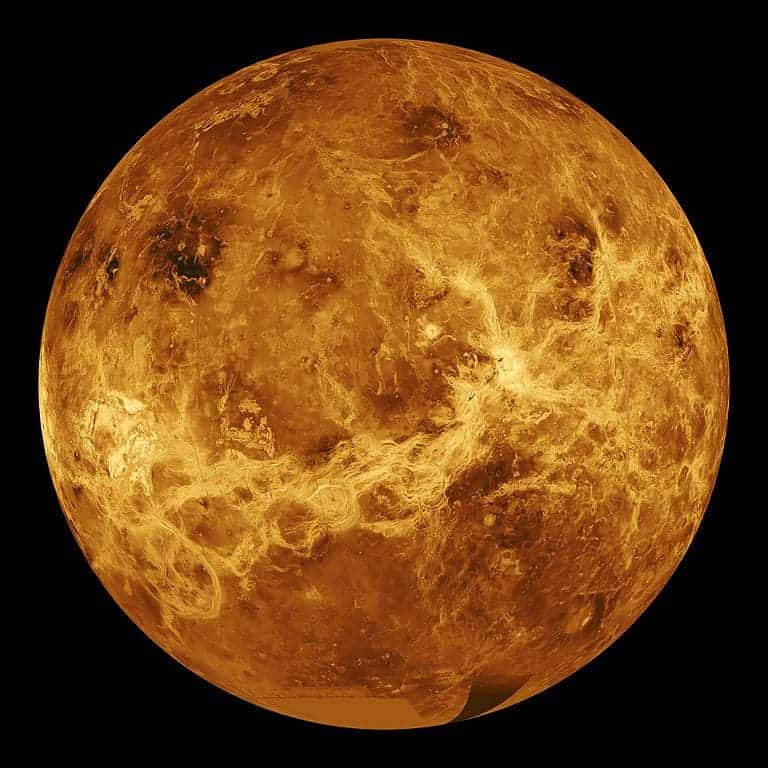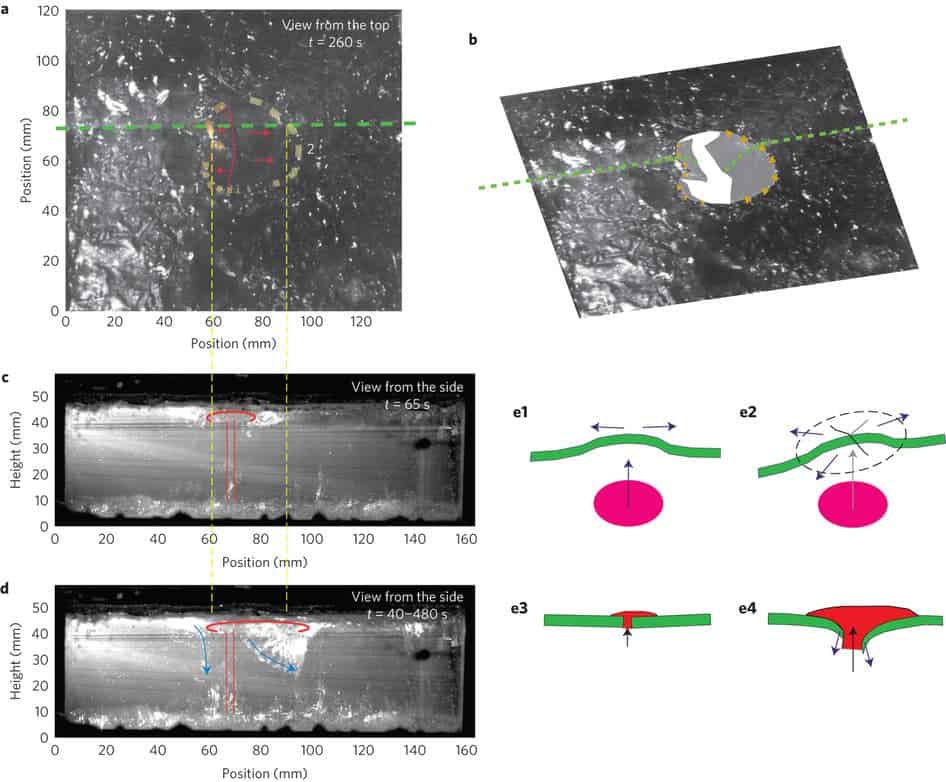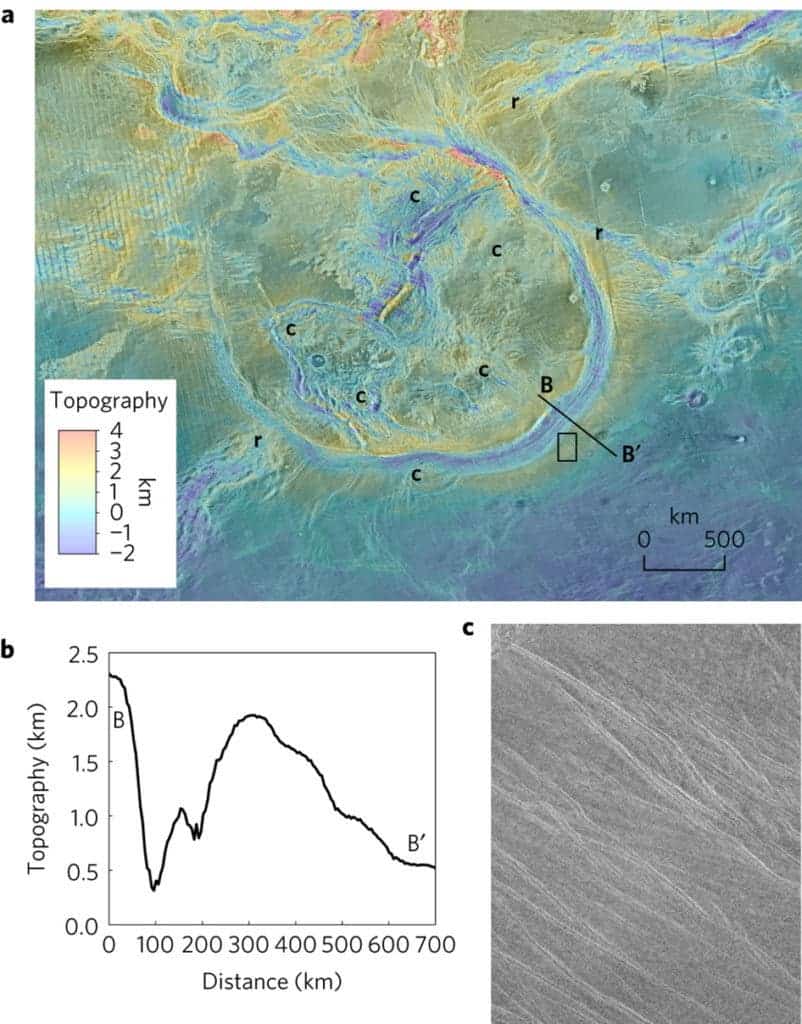Venus might be tectonically active, a new paper reveals — but it’s not the plate tectonics we know and love from back home.

Image credits NASA / JPL.
It’s so similar to Earth that it’s often called its twin, and yet, Venus seems to lack one of the defining features of Earth: tectonic plates. This has been bugging planetary scientists for a long time now because our pearly neighbor should be an ideal host for such processes — but they insist on popping up on Mercury or Europa — a moon out of all places — and pointedly absenteeing from Venus.
So why is Venus such a good candidate for plate tectonics? Well, it’s really similar to the Earth as far as size and chemical composition are concerned. Its surface is also littered with volcanoes. We don’t know for sure which are active or not — the surface is hidden behind thick clouds that make repeated observations nigh impossible — but at least they’re proof that there once was a lively geology in the mantle. The proverbial coffin nail is that Venus is pockmarked by craters and material accumulated over hundreds of millions of years or successive eruptions. So tectonic recycling clearly doesn’t take place here.
Men come from Mars, evidence of tectonics comes from Venus
But it may be the case that Venus just has its own flavor of tectonics. For instance, there are some features on Venus, such as trenches and rifts, that point to some kind of tectonic activity. Under normal circumstances, researchers would try to digitally model internal processes and progressively tweak them until the model matched what we see on the surface — but, according to the team of French and US researchers behind the paper, the models currently at our disposal simply aren’t powerful enough to handle a 3D model of Venus’ mantle and crustal activity in enough detail.
Instead, they used an old-fashioned physical model to figure out what was happening. The team used a solution of silica nanoparticles (i.e. finely ground sand) in suspension in water to match the physical properties of semi-solid rock. Put over a heating plate, this medium re-created the convection cells generated in Venus’ mantle as hot (and thus less dense) material pushes up from the planet core towards the crust.
The team used cameras to monitor the evolution of their model. Over time, as water evaporated, a thin crust started to form on top of the container. On this crust, something similar to distinctive features of Venus’ crust (formations called coronae) began forming on the simulated crust. These “volcano-tectonic features unique to Venus” are circular structures which can grow to a few thousand kilometers across, with a mound-like rise in the center. The rise is predominantly made up of igneous rocks, while the edge is bumpy and ends with a deep trench. This trench is very similar to what happens in the areas where tectonic plates get subducted back on Earth, although the rest of the corona isn’t.

Image credits A. Davaille et al., (2017), Nature.
The team believes that a phenomenon underlying plate tectonics on Earth also creates Venus’ coronae: mantle plumes. Think of them like really big convection cells, with the upwelling material burning through the crust like a blowtorch. On Earth, mantle plumes are responsible for hotspots of volcanic activity especially for volcanoes that are smack-dab in the middle of plates, like Yellowstone or Iceland, and those stringy volcanic island arcs like Hawaii. Sometimes, they can be powerful enough to burn through whole tectonic plates and break them apart.
But that happens because Earth’s crust is pretty thick and solid. Venus is a much hotter place, with average surface temperatures revolving around 450 degrees C (840 F), making its crust thinner and more flexible — so mantle plumes have a different effect. As the team’s model showed, when a plume hits the crust, molten rock is pushed up fractures and faults to the surface. This added weight causes the crust to sag, widening the fractures, making more material pile on, and so forth. Eventually, the whole section of the crust will rupture, sink, and melt into the mantle.

Image credits A. Davaille et al., (2017), Nature.
This unique take on tectonics is what we see as a corona. The central igneous bit is deposited by material pushed up by the plume, surrounded by a circular equivalent of a subduction trench. The authors compare their model’s result to two important coronae, Artemis and Quetzalpetlatl, and find that the features observed in the lab line up pretty well to those seen on Venus.
Venus’ coronae might hold an unexpected glimpse into the Earth’s past, too. The team notes that temperature conditions on Venus today are very similar to what Earth had for much of its early history. So it’s possible that there was a more Venus-like tectonic system in place down here before the Earth cooled down enough for plate tectonics to take a hold.
The full paper “Experimental and observational evidence for plume-induced subduction on Venus” has been published in the journal Nature Geosciences.



